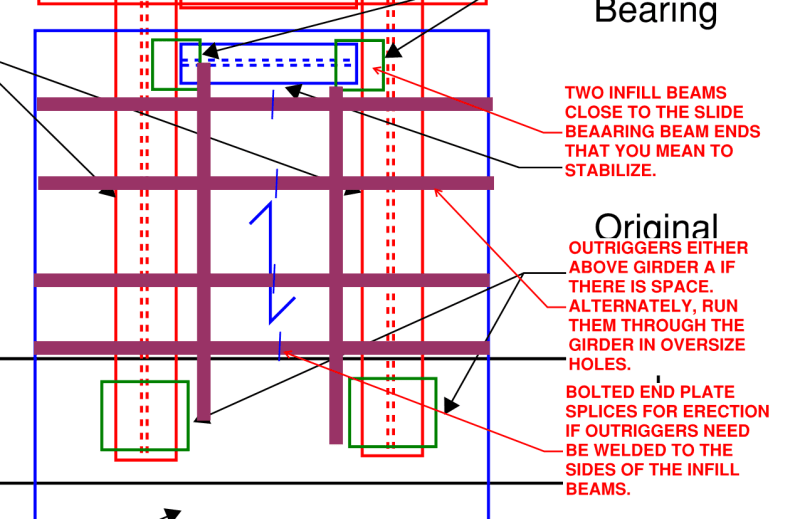MGaMart
Structural
- Aug 23, 2016
- 50
I've come across an unusual situation (at least for me) where the framing is requiring a sliding bearing to exist between the deck and the beam that supports the deck. The back story, it's a pedestrian bridge between two buildings. The attached sketch shows the framing situation. Beam A rests on a sliding bearing but the movement joint is not permitted to be located at the end of Beam A (where it would have been most optimal). The ends of Beam B and Beam C connect into Beam A (two 'Beam A' beams make up the primary girders of the pedestrian bridge), and the movement joint is located between Beams B&C. The deck bears on Beam C and needs to be designed to accommodate the movement of Beam A as it translates in the one direction (parallel to Beam A's longitudinal axis). Has anyone come across this situation before? I'm not a big fan of simply greasing the beam. The framing configuration (i.e. movement joint) cannot be changed (already had a number of meetings with the consulting firm and they need it to stay where it is for architectural reasons). The only solution I've come up with is to 'detach' Beam C from Beam A and introduce a seated bracket with a sliding bearing on each Beam A that would then support Beam C. The deck could then be properly fastened to Beam C. It would add two additional sliding bearings to the bridge, but would shift the relative movement away from the deck which is the crux of this issue. If any of the deck flutes that are supported by Beam C happen to make contact with the top flange of Beam A, my potential solution breaks down in tremendous fashion. I should also point out that the deck does cantilever about a foot beyond the edges of Beam A which further discounts my solution. I just wanted to throw it out to the Eng-Tips community to see if any other more elegant solutions exist.

